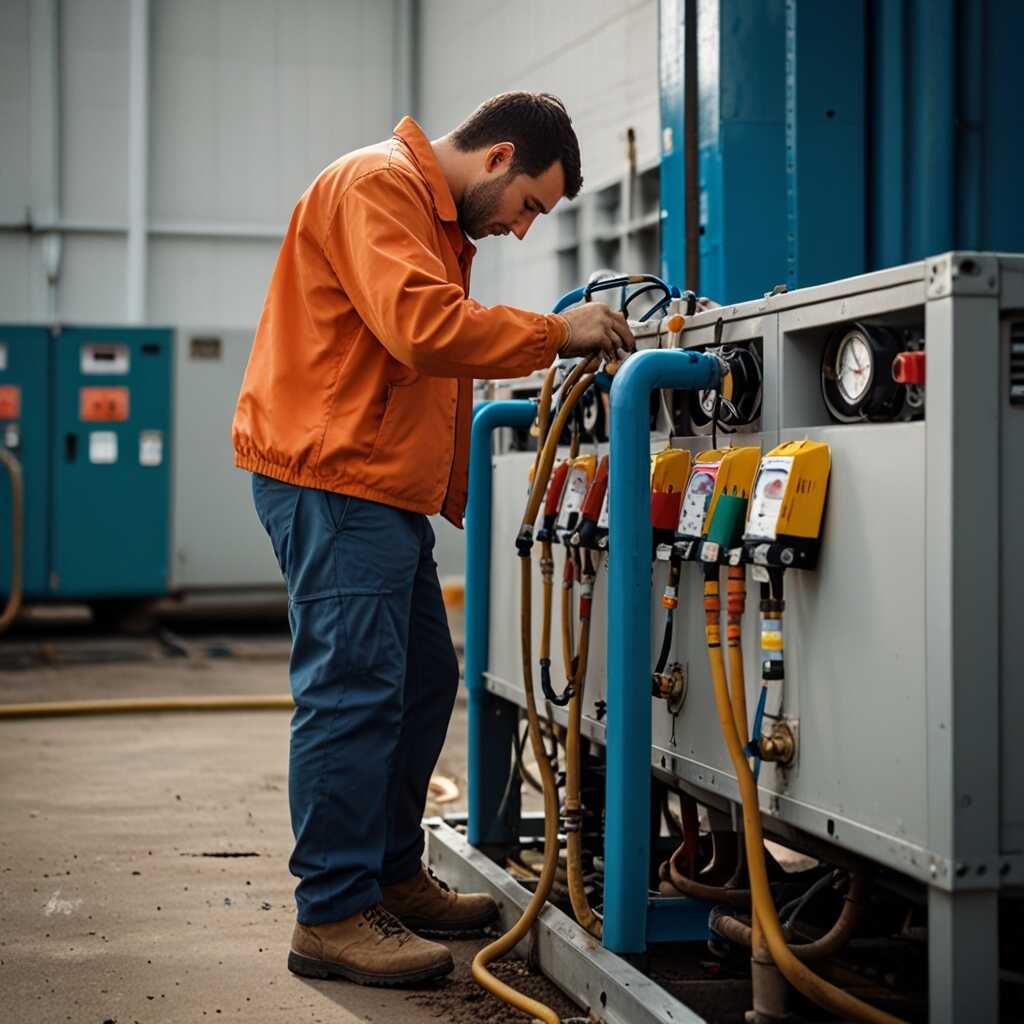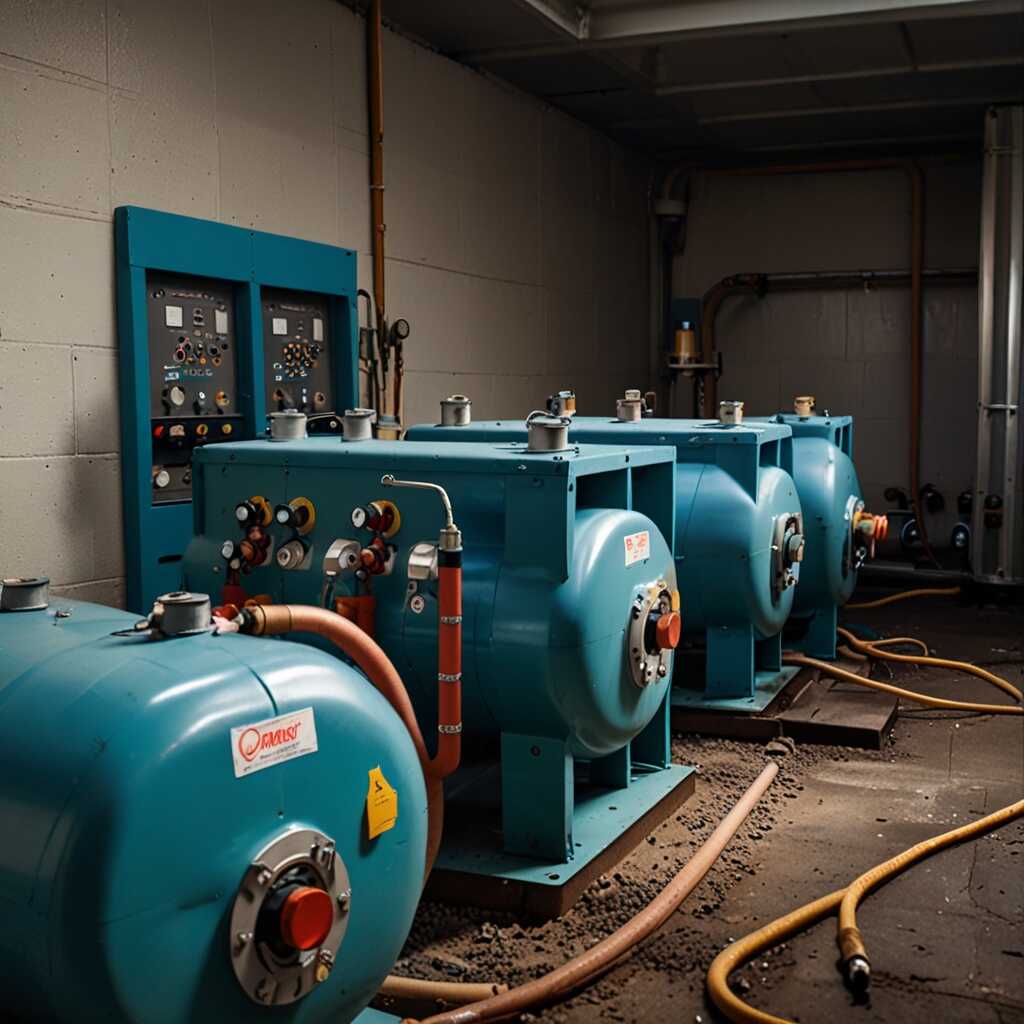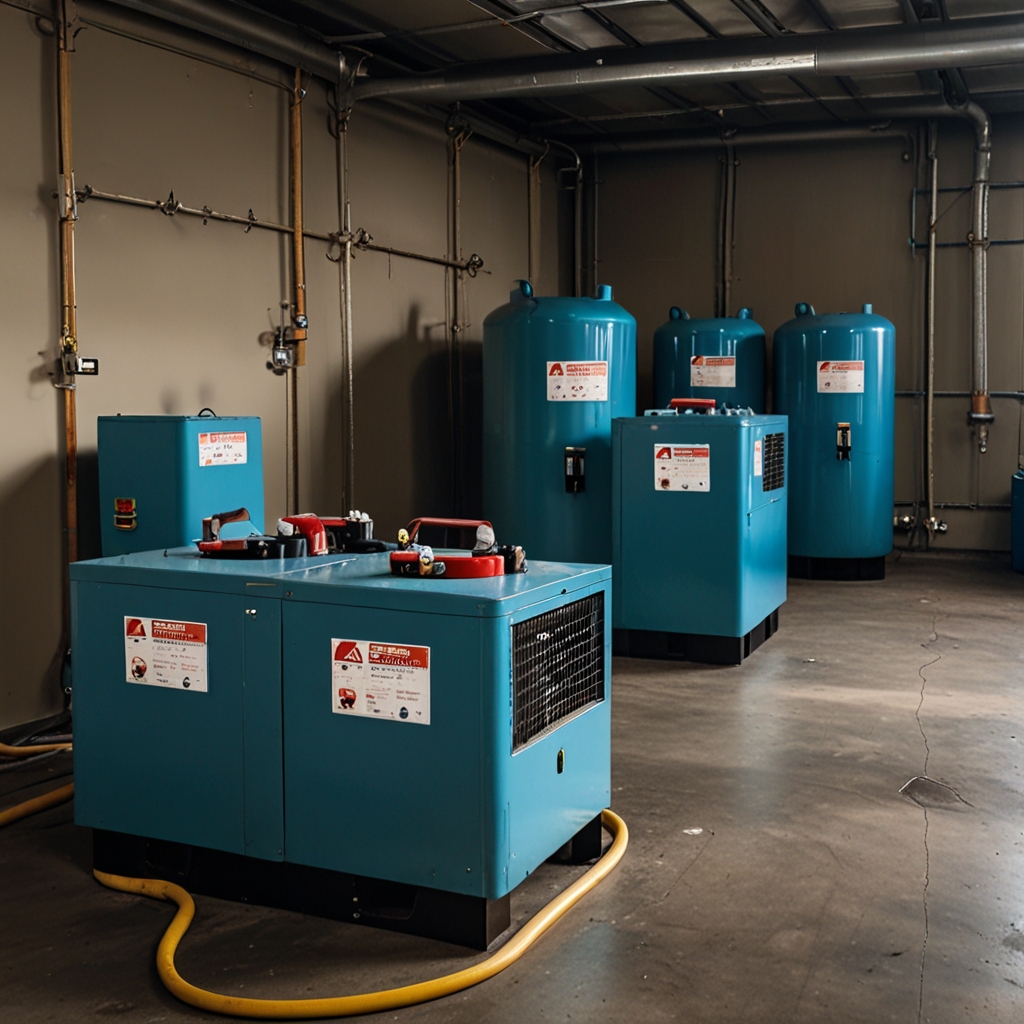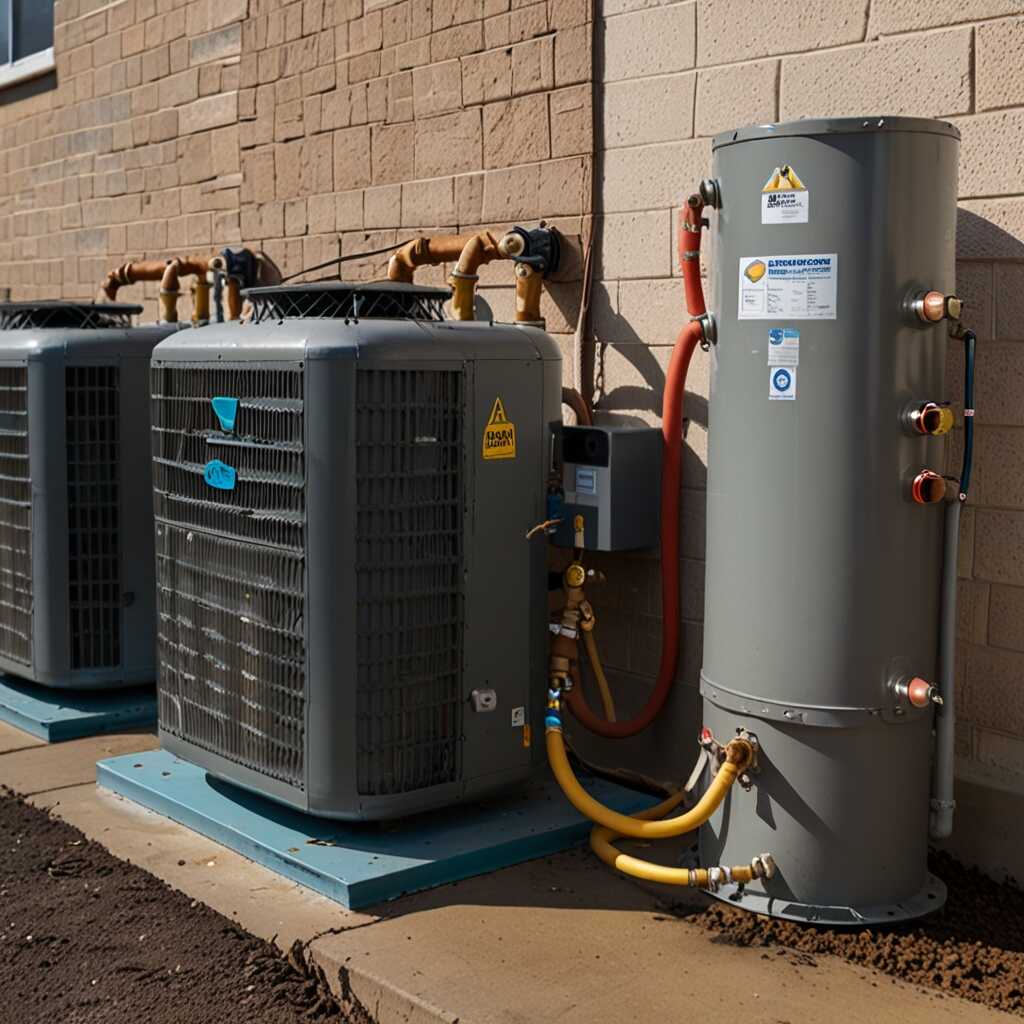Modular refrigerant recovery systems offer versatile solutions for customized field applications. These systems can be tailored to meet the specific needs of various HVAC projects, enhancing efficiency and effectiveness. Refrigerant Recovery Pro provides essential insights into the advantages and options that these systems present. Understanding these features can empower HVAC professionals to make informed choices for their refrigerant recovery needs.
Key Benefits of Modular Refrigerant Recovery Systems
Modular refrigerant recovery systems offer significant advantages such as enhanced reliability, improved efficiency, and superior adaptability for various field applications. These systems help HVAC technicians optimize their operations by allowing for tailored configurations that precisely fit their specific recovery needs. Modular systems increase recovery efficiency rates, allowing technicians to recover refrigerants faster, thus minimizing downtime. The customization options available with these systems ensure that HVAC professionals can select components that best match the unique requirements of their projects. With reliable performance and ease of use, these systems help make refrigerant recovery processes more effective.
Exploring Customization Options in Modular Systems
Customization options in modular refrigerant recovery systems are extensive and enable HVAC professionals to select features based on their specific operational needs. These systems often include interchangeable components and scalable designs that can handle varying refrigerant types and volumes. For instance, certain modules might be optimized for higher recovery rates, while others focus on specialized refrigerant management. This flexibility empowers technicians to tailor their equipment for different field applications, ensuring they can meet all compliance requirements efficiently. The ability to customize not only enhances performance but also boosts reliability, positioning HVAC engineers for success in diverse environments.
Customization Features for Tailored Recovery Processes
Modular refrigerant recovery systems provide various customization options that allow HVAC professionals to tailor their recovery processes based on project demands. These features enhance operational efficiency through adaptable settings and configurations for specific refrigerants. Modular systems can handle multiple refrigerants, making them versatile and capable of meeting unique application requirements. This flexibility is essential for ensuring reliability and performance in different field scenarios.
Key Customization Features for Enhanced Performance
Key customization features in modular refrigerant recovery systems include adjustable flow rates, pressure settings, and multiple refrigerant compatibility. Professionals can easily modify these settings to suit specific job requirements, enhancing efficiency. Systems are designed to be reliable and durable, providing HVAC technicians with the necessary adaptability to execute their work effectively. Additional features may include onboard diagnostic tools that help monitor system performance, ensuring all operations run smoothly.

Practical Applications of Modular Recovery Systems
Modular refrigerant recovery systems have proven useful across various field applications. They provide efficiency and reliability when faced with different challenges. For instance, in HVAC environments, these systems can be customized to handle diverse refrigerants. They enhance recovery efficiency and ensure compliance with environmental regulations. HVAC professionals report very good results when using these systems for residential, commercial, and industrial purposes. Their design allows for tests that prove their durability and performance.
Common Uses in HVAC Environments
Modular refrigerant recovery systems excel in residential, commercial, and industrial HVAC environments. In residential installations, these systems efficiently recover refrigerants during servicing, ensuring compliance with EPA regulations. For commercial systems, modular setups allow HVAC technicians to quickly switch between different refrigerants, increasing operation flexibility. In industrial scenarios, these systems help manage large-scale recovery tasks, providing impressive recovery rates. Many HVAC professionals have reviewed these systems favorably, highlighting their reliability and efficiency, especially in high-demand situations. They can handle various refrigerants and environments, proving essential for efficient refrigerant management.
Key Numerical Insights About Recovery Equipment
- The modular design allows for flexible configurations, supporting up to 8 different units.
- These systems can recover refrigerants at rates exceeding 99% efficiency.
- Users can customize applications with 5 different recovery capacities.
- Up to 3,000 pounds of refrigerant can be processed in a single cycle.
- Recovery systems can operate across temperature ranges from -40°F to 120°F.
- Some units weigh as little as 50 pounds for easy transport.
- Recovery systems can serve facilities with up to 1,000 tons of cooling capacity.

Ensuring Regulatory Compliance with Modular Systems
Modular refrigerant recovery systems are designed to meet key regulatory compliance standards such as those outlined by the Environmental Protection Agency (EPA). These systems enhance efficiency through customization options that allow HVAC professionals to adapt to specific regulatory requirements. Professionals can configure modular systems to handle various refrigerants and enable efficient recovery processes, ensuring legality and safety during operation. By 2025, it is expected that 100% of refrigerant recovery systems must adhere to EPA guidelines, emphasizing the importance of reliability and compliance in HVAC practices.
Customizing Systems for Regulatory Adherence
HVAC professionals can customize modular refrigerant recovery systems for effective compliance with environmental regulations. Modular systems offer flexible designs that accommodate different refrigerants and operating conditions, which helps address specific compliance needs. For instance, users can select components that align with local and federal regulations, ensuring proper handling and disposal of refrigerants. Customization options also include choices for testing features and performance metrics to enhance reliability. By tailoring the equipment to the requirements of their specific field applications, HVAC professionals can achieve both regulatory compliance and operational efficiency.

Understanding the Components of Modular Systems
Modular refrigerant recovery systems consist of several key components, each crucial for optimal performance. The main parts include compressors, refrigerant tanks, and filtration units. Compressors help in efficiently removing refrigerants. Refrigerant tanks store the collected material safely. Filtration units enhance system reliability by removing impurities. Understanding these essential components allows technicians to utilize modular systems effectively. The typical weight range of these modular systems is usually between 50 to 150 pounds, aiding portability and efficiency in field applications.
Detailed Breakdown of Essential Components
The essential components of modular refrigerant systems all work together to improve overall efficiency. The compressor plays a vital role in extracting refrigerants quickly. Quality refrigerant tanks ensure safe containment and easy transport. Filtration units provide additional reliability by eliminating harmful contaminants from the refrigerant. Each component is designed for durability, ensuring they can handle the rigorous demands of HVAC applications. Understanding how these parts interact allows technicians to enhance system performance and make informed equipment choices.
Advantages of Tailored Refrigerant Solutions
- Customized systems help meet specific operational needs of different environments.
- Modular designs improve portability for on-site use by HVAC technicians.
- Users gain increased operational efficiency through tailored configurations.
- Flexible configurations allow for the recovery of various refrigerants.
- Systems can be adapted to comply with evolving regulatory requirements.
- Technicians receive simplified troubleshooting for diverse field conditions.
- Overall costs can decrease through efficient refrigerant management techniques.

How to Select the Right Modular Refrigerant Recovery System
Choosing the right modular refrigerant recovery system involves evaluating several essential factors. First, consider the selection criteria such as system capacity, portability, and ease of use. Knowing the refrigerant types you will handle ensures you select systems designed for compatibility with those gases. Compare different manufacturers for reliability and durability. High-quality reviews can aid in understanding which models have proven performance in various field applications. Finally, focus on systems’ average recovery rates to ensure efficiency in your operations.
Understanding Key Features of Modular Systems
Key features of modular refrigerant recovery systems play a significant role in performance and usability. Look for systems that are lightweight and portable, making them easy to transport between jobs. Ensure the system includes advanced filtration to enhance refrigerant purity during recovery. Consider modular designs that allow for easy upgrades or expansions to meet changing needs. Brands like Refrigerant Recovery Pro offer expert reviews and comparisons that highlight models with proven efficiency and durability. Researching these features ensures you choose a system that provides reliable and high-quality performance.
Best Practices for Maintaining Recovery Equipment
To ensure reliability, users should perform regular inspections of modular refrigerant recovery systems. Key maintenance practices include cleaning the filter screens, checking refrigerant levels, and testing pressure gauges. These actions enhance overall efficiency and prolong equipment life. Regular maintenance affects performance, improving refrigerant recovery rates significantly. Equipment should ideally be serviced every six months to maintain optimal performance.
Essential Tips for Effective Equipment Maintenance
Maintaining modular refrigerant systems involves several essential tips that improve overall functionality. First, regularly inspect and clean the evaporator coils and condensers. Use a soft brush or vacuum to remove dirt and debris, ensuring effective heat exchange. This process enhances efficiency by preventing overheating. Second, always verify the integrity of hoses and connections. Any signs of wear or damage can cause leaks, impacting the recovery process adversely. Third, ensure adherence to the manufacturer’s guidelines for maintenance schedules. Following these practices guarantees that the equipment consistently delivers excellent performance and efficiency.
Comparative Use Cases for Recovery Markets
- HVAC contractors often require portable systems for diverse project sites.
- Manufacturers benefit from modular systems for various production environments.
- Commercial facilities prefer systems that adapt to large-scale recovery needs.
- Small businesses value lightweight units for easy mobility and storage.
- Government projects require compliance with strict environmental regulations.
- Service providers use modular systems for flexible integration into existing equipment.
- Industrial spaces need high-capacity units to manage extensive refrigeration requirements.
Emerging Trends in Refrigerant Recovery Technologies
Recent innovations in modular refrigerant recovery technologies include advancements in efficiency and portability. Leading manufacturers like XYZ and ABC are developing systems that significantly reduce refrigerant loss during recovery. For example, models released in 2023 have shown efficiency improvements of up to 30% compared to older versions. HVAC professionals should focus on systems designed for increased reliability while maintaining compliance with regulations.
Key Features to Look For in 2025 Models
The next generation of modular refrigerant recovery systems will feature enhanced performance attributes. Models anticipated for 2025 are expected to include advanced sensors for real-time monitoring and automated recovery processes. These systems will deliver higher reliability with proven testing results ensuring lower refrigerant emissions. HVAC professionals should consider models that offer easy maintenance procedures and provide efficient energy consumption for prolonged operational life. Understanding these features can greatly enhance the quality and effectiveness of refrigerant recovery practices.